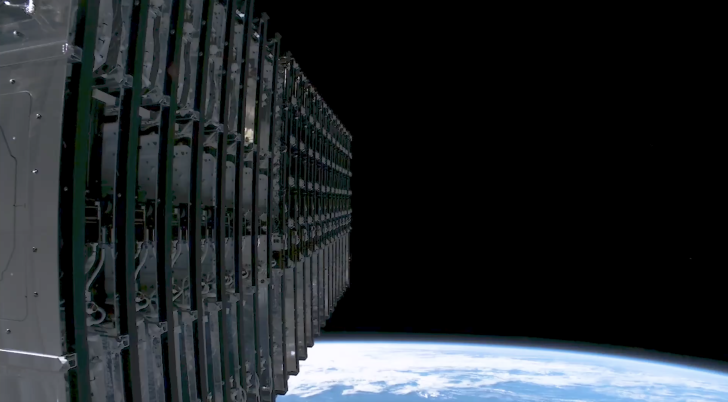SpaceX has recently released a video showcasing the Falcon 9 rocket successfully deploying a group of 21 Starlink satellites into orbit. This launch marks the seventh mission conducted by the company this February, with six dedicated to Starlink. The majority of these missions involve sending the same number of satellites into space, a significant portion of which are designed for direct-to-cell connectivity, enhancing mobile satellite internet access.
Record-Breaking Falcon 9 Launch
The Falcon 9 mission that took place earlier today from Florida established a new milestone in rocket reusability, as SpaceX achieved the remarkable feat of recovering a Falcon 9 booster for the 26th time. This accomplishment underscores the company’s commitment to efficiency and sustainability in its launch operations.
Falcon 9 lands on the A Shortfall of Gravitas droneship, completing the first 26th launch and landing of an orbital class rocket pic.twitter.com/x18IxIGtNk
— SpaceX (@SpaceX) February 15, 2025
Starlink’s Mobile Internet Expansion
Throughout 2024, SpaceX has focused on constructing a direct-to-cell satellite internet constellation, enabling mobile users to enjoy satellite internet from their smartphones. This initiative is in partnership with T-Mobile, which was recently promoted through a Super Bowl advertisement, extending Starlink’s services to users on other cellular networks.
For those not subscribed to T-Mobile, access is available for free via an eSim. This collaboration aims to broaden cellular internet coverage, leading SpaceX to conduct frequent launches of cellular satellites on its Falcon 9 missions. The trend of prioritizing Starlink satellite launches has been evident not just in the current year but also in previous years.
View of 21 @Starlink satellites, including 13 with Direct to Cell capabilities, being deployed in orbit pic.twitter.com/QFHZVnySLF
— SpaceX (@SpaceX) February 15, 2025
The Competitive Landscape of Satellite Internet
Despite the effective operations of the Falcon 9, its classification as a medium-lift rocket presents challenges for rapid expansion of SpaceX’s next-generation Starlink satellite internet network. The competition in the satellite internet industry is intensifying. Amazon’s Kuiper and Apple are entering the fray, with Kuiper planning to deploy its satellites using Blue Origin’s New Glenn rocket and Apple collaborating with satellite partners to develop new technologies.
At present, SpaceX stands out as the only player operating a functional satellite internet constellation, holding the title for the largest satellite connectivity network globally. Its services have also reached the commercial aviation sector; more than 500 aircraft worldwide now utilize Starlink for internet access, with Norwegian Cruise being the latest to join in late January.
Major airlines, including Qatar Airways, have incorporated Starlink into their fleets. Additionally, notable tests, such as those conducted by Boom Aerospace’s supersonic aircraft, utilized the service for live streaming, further demonstrating its capabilities. SpaceX successfully leveraged its technology to broadcast Starship rocket test flights, showcasing spectacular views during atmospheric re-entries.

